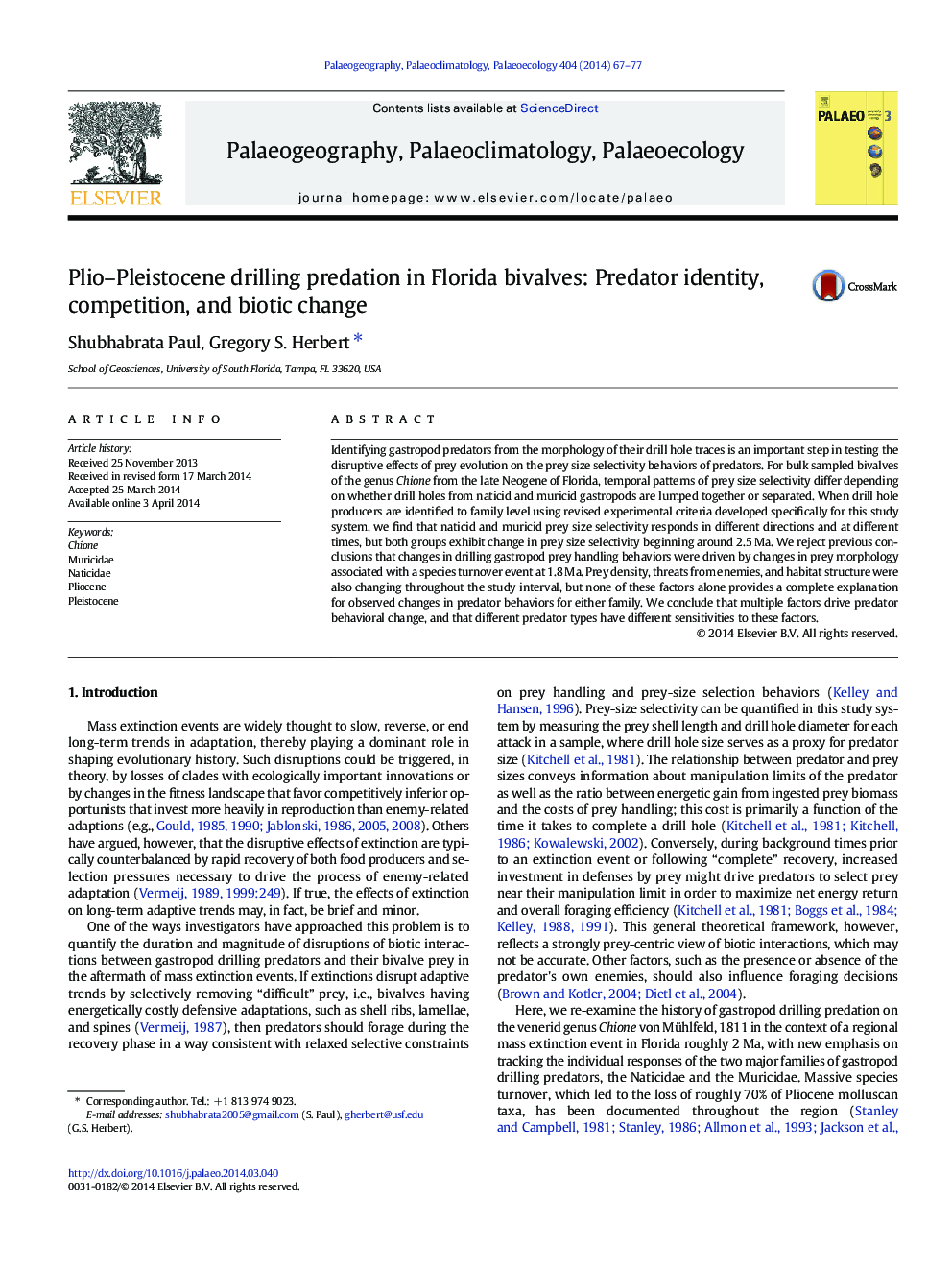| کد مقاله | کد نشریه | سال انتشار | مقاله انگلیسی | نسخه تمام متن |
|---|---|---|---|---|
| 6350140 | 1622186 | 2014 | 11 صفحه PDF | دانلود رایگان |
عنوان انگلیسی مقاله ISI
Plio-Pleistocene drilling predation in Florida bivalves: Predator identity, competition, and biotic change
ترجمه فارسی عنوان
انفجار پلاستیکی پیلوستکنه در دوگانگی فلوریدو: هویت شکارچی، رقابت و تغییرات زیست شناختی
دانلود مقاله + سفارش ترجمه
دانلود مقاله ISI انگلیسی
رایگان برای ایرانیان
موضوعات مرتبط
مهندسی و علوم پایه
علوم زمین و سیارات
فرآیندهای سطح زمین
چکیده انگلیسی
Identifying gastropod predators from the morphology of their drill hole traces is an important step in testing the disruptive effects of prey evolution on the prey size selectivity behaviors of predators. For bulk sampled bivalves of the genus Chione from the late Neogene of Florida, temporal patterns of prey size selectivity differ depending on whether drill holes from naticid and muricid gastropods are lumped together or separated. When drill hole producers are identified to family level using revised experimental criteria developed specifically for this study system, we find that naticid and muricid prey size selectivity responds in different directions and at different times, but both groups exhibit change in prey size selectivity beginning around 2.5Â Ma. We reject previous conclusions that changes in drilling gastropod prey handling behaviors were driven by changes in prey morphology associated with a species turnover event at 1.8Â Ma. Prey density, threats from enemies, and habitat structure were also changing throughout the study interval, but none of these factors alone provides a complete explanation for observed changes in predator behaviors for either family. We conclude that multiple factors drive predator behavioral change, and that different predator types have different sensitivities to these factors.
ناشر
Database: Elsevier - ScienceDirect (ساینس دایرکت)
Journal: Palaeogeography, Palaeoclimatology, Palaeoecology - Volume 404, 15 June 2014, Pages 67-77
Journal: Palaeogeography, Palaeoclimatology, Palaeoecology - Volume 404, 15 June 2014, Pages 67-77
نویسندگان
Shubhabrata Paul, Gregory S. Herbert,
